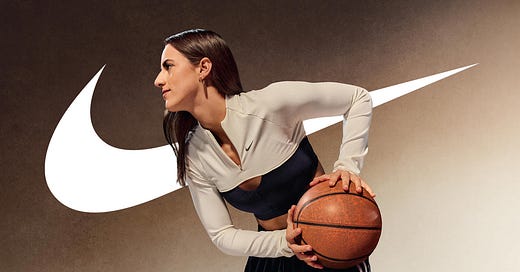The Evolving Marketing Landscape Of Women’s Sports
From sponsorship growth to cultural influence, women’s sports are reshaping marketing strategies, offering brands a lucrative and impactful opportunity.
The integration of women’s sports into mainstream marketing strategies has gained significant momentum in recent years. Increased viewership, a growing fanbase, and more culturally relevant athletes have boosted the visibility of women’s sports. Data from Futures Sport & Entertainment, revealed that 20.9 million people tuned in for at least three minutes of women’s sport coverage in early 2024, showing an upward trend in their popularity.
Viewership is only one aspect of the growth. Social media platforms like Instagram have become central to how female sports fans interact with content. In recent years, social media engagement has significantly increased, highlighting a more engaged fanbase. This provides marketers with valuable opportunities to target an audience that’s highly active online, leveraging platforms to create deeper, more meaningful connections with potential consumers.
Cultural relevance plays a crucial role in the rise of women’s sports. High-profile athletes like Simone Biles, Caitlin Clark, and She’Carri Richardson have transcended their sports, becoming cultural icons. Their influence creates unique opportunities for brands to engage with passionate fanbases. These athletes are celebrated not just for their athletic achievements but also for their broader societal impact, positioning them as powerful ambassadors for brands championing inclusion.
Brand investments in women’s sports have been rising, with companies such as Nike, Pampers, and Sephora leading the way. These brands have focused on campaigns centred around inclusion and empowerment. According to Nielsen, 71% of Women’s World Cup fans believe sponsors advance gender equality, showing that these initiatives resonate deeply with consumers and improve brand perception, further solidifying the long-term value of such investments.
Nike’s campaign for the Paris Olympics marked their largest media spend, described by Heidi O’Neill, Nike’s president of consumer, product, and brand, as “the most investment and the biggest moment for Nike in years.” The company unveiled futuristic shoe prototypes and Olympic kits, showcased by athletes like Sha’Carri Richardson. This move aimed to boost sales and reassert Nike’s dominance amid increasing competition from brands like On Running and Hoka.
Nike’s marketing strategy focuses on athlete empowerment, tailoring apparel to enhance performance and comfort. Extensive research is used to create designs that support athletes’ needs, building trust and fostering deeper connections with audiences. This approach strengthens Nike’s position as a leader in sports marketing while ensuring their brand resonates with both professional athletes and consumers who value innovation and performance.
Despite progress, women athletes still receive a disproportionately smaller share of sponsorship funds compared to their male counterparts. This gap presents a significant opportunity for brands to invest in gender equity and support women’s sports. Such investments align with the growing consumer demand for representation, inclusivity, and diversity, allowing brands to tap into a loyal, socially-conscious audience that values authenticity and empowerment.
Integrating women’s sports into mainstream marketing strategies offers brands more than just equity—it is a smart business move in a rapidly expanding market. Brands that embrace this shift will see financial and reputational benefits as inclusivity continues to resonate with consumers. By investing in women’s sports, companies can strengthen their brand image, attract new customers, and align with the broader movement toward gender equality in sports and beyond.





